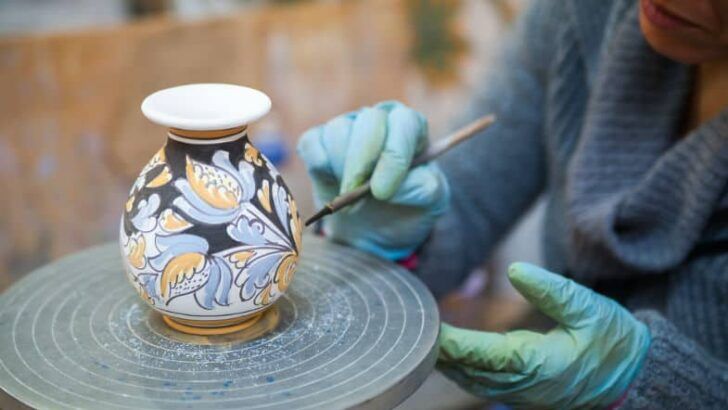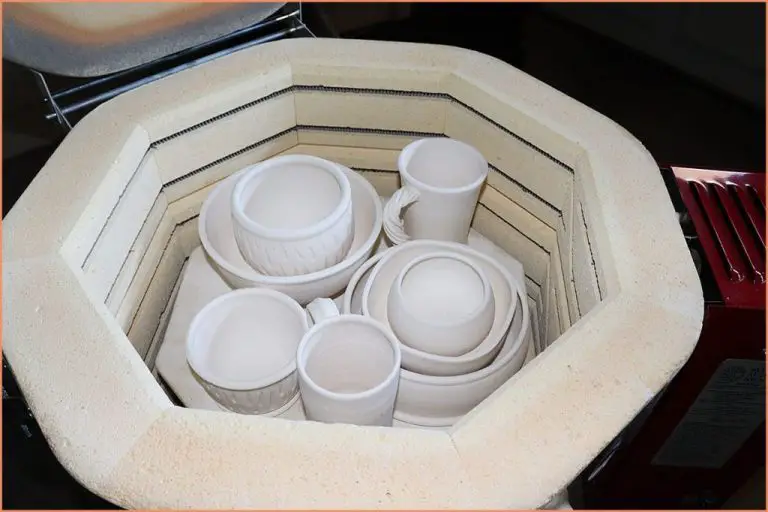How Do You Solidify Air Dry Clay?
Air-dry clay, also known as claycrete or self-hardening clay, is a modeling material made from clay and other minerals that hardens naturally when exposed to air. Unlike conventional clay that requires firing in a kiln, air-dry clay cures through evaporation as its water content diminishes over time.
Air-dry clay offers a versatile, accessible sculpting medium for artists of all ages and skill levels. It can be molded into various shapes and designs that solidify into durable, lightweight finished pieces. The clay remains pliable during the sculpting process but then hardens to a cement-like consistency. This allows ample working time for shaping intricate details.
When fully cured, air-dry clay objects become hard and durable while still retaining some flexibility if thin. The finished pieces do not need to be glazed or painted, but can be decorated if desired. Common uses for air-dry clay include pottery, jewelry, dolls, architectural models, DIY crafts, and more.
Compared to other clays, air-dry varieties are low-maintenance and easy to use right out of the package. They also cure quickly at room temperature without additional equipment. These features make air-dry clay a practical choice for casual sculptors and hobbyists looking for a user-friendly medium.
Drying Time
Air dry clay dries through evaporation, so there are several factors that affect the drying time:
Thickness
Thicker pieces of clay will take longer to fully dry. Aim for a maximum thickness of 1/4 inch if you need a quick drying time. Going thicker than 1/2 inch will require extreme patience.
Environment
Dry air and warmth help moisture evaporate from the clay. Humid, cool environments will slow drying. Try to dry clay in a room-temperature spot with good airflow.
On average, thin pieces will dry in 24-48 hours and thicker pieces 1-2 weeks. Drying tiles flat will be quicker than sculptural shapes.
Sealing
Sealing your air-dry clay after it dries is an important step to help make it more durable and protect it against moisture absorption. There are a few main purposes for sealing air-dry clay:
- Prevent moisture damage – Sealers create a protective barrier to prevent absorbed moisture from making the clay soft again.
- Strengthen the piece – Sealers can harden and reinforce the outer layer of the clay.
- Allow for painting/finishing – Most paints and finishes adhere better to a sealed surface.
- Enhance durability – A good sealer will help the finished clay artwork last longer.
There are a variety of sealers made specifically for air-dry clays. Common options include:
- Acrylic sprays – These are widely available and easy to apply with an even coat.
- Polyurethane – This provides a high-gloss protective coat when brushed on.
- Mod Podge – Can be brushed on as a decoupage glue and sealer.
- Epoxy resin – Offers a thick, glassy coating for a durable finish.
When applying a sealer, do so in a well-ventilated area and carefully follow the product instructions. In general, 2-3 thin, even coats are better than 1 thick coat. Allow each coat to fully dry before adding the next. Once sealed, the clay is ready for decoration, use, and display.
Baking
Baking air dry clay is an optional step that can significantly speed up the drying and hardening process. While air dry clay will eventually dry and cure on its own at room temperature, baking allows you to complete projects much faster.
When baking air dry clay, it’s recommended to use a low temperature oven or toaster oven, ideally between 130-275°F. Higher temperatures can cause the clay to crack or become brittle. Bake times will vary based on the thickness and size of your clay sculpture, but most pieces only need 15-30 minutes of baking.
To test if an air dry clay piece is properly baked, touch the surface gently. It should be completely hard with no indentations. If the surface still seems soft or spongy, return to the oven for 5-10 more minutes. Allow all baked clay projects to cool fully before handling.
With proper low temperature baking times, air dry clay will harden into a strong, durable finished product. Just be careful not to exceed the manufacturer recommended baking temperatures, as going above 275°F risks damaging the clay.
Humidity
Humidity plays a key role when air drying clay. High humidity slows the drying process, while low humidity speeds it up. This is because damp air disrupts evaporation, which is necessary for the water in clay to fully dissipate.
Areas with humidity above 50% will require longer drying times. You may need to allow 1-2 weeks for pieces to completely harden. Avoid drying clay in direct sunlight in humid climates, as this can cause cracking.
Try the following tips for successful air drying in humid conditions:
- Use a dehumidifier or fan to circulate drier air around clay pieces.
- Dry clay in an air conditioned room.
- Place the clay by a window or doorway to maximize air flow.
- Dry flat items on a rack to allow air circulation underneath.
- Elevate pieces off non-porous surfaces using glass marbles or wooden pegs.
- Keep the room temperature around 70°F (21°C).
With extra drying time and care, beautiful hardened clay pieces can be achieved even in humid areas.
Clay Thickness
When working with air dry clay, the thickness you roll or shape the clay to will impact how long it takes to completely cure and harden. Thinner pieces made with 1/8” thickness or less will dry much faster than thicker pieces. Thick areas of clay exceeding 1/4” or more can take exponentially longer to fully cure. For best results, aim to keep air dry clay projects to 1/4” thickness or less whenever possible.
Following manufacturer guidelines for maximum thickness recommendations can help ensure proper drying. Most air dry clays recommend working in 1/4” layers or less. Going above the recommended thickness can cause cracking or prevent the core and center of the clay from fully hardening. If you need a thicker finished piece, build up thickness gradually by joining multiple thin layers together rather than making one solid thick form.
Drying Surface
Choosing the right surface for drying air dry clay can help accelerate the drying process and prevent sticking and cracking. Smooth, non-porous surfaces like glass, plastic, metal, and acrylic work best. Avoid porous materials like untreated wood, cardboard, and paper as they will draw moisture out of the clay too quickly, causing cracking. Stay away from fabric surfaces as well, as the clay can stick and leave residue behind.
Good options for drying surfaces include acrylic sheets, glass sheets, plastic cutting boards, metal baking trays, and unfinished ceramic tiles. You can also use plastic zip top bags or plastic wrap to create a non-stick barrier between the clay and the drying surface. Just be sure to flip the clay over periodically so it dries evenly on both sides.
To prevent sticking, you may need to spritz the drying surface very lightly with water first. You can also dust the surface with cornstarch or baking powder. Avoid applying oils or cooking sprays, as these can leave a residue on the clay. With the right non-porous drying surface and proper flipping techniques, air dry clay can harden smoothly without cracks or imprints.
Air Circulation
Airflow plays an important role in allowing air dry clay to solidify properly. Moving air speeds up the drying process by removing moisture from the surface of the clay. Stationary or stagnant air will slow down drying and can leave the clay feeling tacky.
To promote air circulation while clay is drying, set up a fan nearby blowing gently over the surface. Avoid aiming the fan directly at the clay which can overly dry the surface. Open any windows or doors in the room to allow fresh air exchange. You can also carefully move the piece itself to a new area periodically to expose all sides to airflow.
Placing air dry clay in an area with active ventilation like near an air vent or dehumidifier will make the clay cure faster. Rotate the piece or prop it up on something like chopsticks to allow air underneath as well. Air circulation is key for properly hardening air dry clay.
Troubleshooting Issues with Air Dry Clay
Air dry clay can sometimes develop issues like cracking, peeling, stickiness, and other problems as it dries and cures. Here are some tips for troubleshooting common issues with air dry clay projects:
Fixing Cracks
If your air dry clay project develops cracks as it dries, there are a couple options to fix it:
- Fill in smaller cracks with watered-down clay. Use a paintbrush to apply the clay slip into the crack and smooth over with your fingers once dry.
- For larger cracks, cut away the cracked section with a craft knife and fill in the gap by pressing together new clay. Smoothe over the seam to blend the old and new clay.
- You can also mix a little clay slip and patch cracks from the underside or backside of the project to make repairs less visible.
Stopping Peeling or Flaking
If sections of clay start peeling or flaking off, it means certain areas dried too quickly or unevenly. To prevent peeling:
- Mist the project with water to rehydrate overly dry areas and smooth them back into place before returning to dry.
- Avoid drying clay in direct sunlight or drafty areas that cause uneven drying.
- Apply a very thin layer of clay slip to the backside of a peeled area and smooth over gently to re-adhere it.
Fixing Stickiness
Air dry clay can get sticky if it didn’t fully dry and cure. Try these tips:
- Let the project dry longer, turning periodically, until no exposed surfaces feel cool or tacky.
- Baking the clay will fully harden it. Follow package directions for baking temp and times.
- For small sticky spots, dust with cornstarch or baby powder to absorb excess moisture and reduce stickiness.
Storing Unused Air Dry Clay
Air dry clay can dry out quickly if not stored properly between uses. Here are some tips for keeping unused clay soft and workable:
Seal It
Wrap any unused clay tightly in plastic wrap or put it in a resealable plastic bag with as much air pressed out as possible. This creates a moisture barrier and prevents the clay from drying.
Add a Damp Paper Towel
You can also place a slightly damp (not dripping wet) paper towel in with the wrapped clay. This provides extra moisture.
Airtight Container
For long term storage, place the wrapped clay in an airtight plastic container. Tupperware or food storage containers work well.
Check Regularly
Every few days, check on the stored clay and rewrap in plastic or replace the paper towel if it seems to be drying out.



